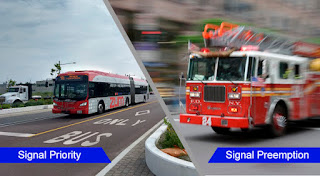How a Traffic Light Preemption Device Enhances Emergency Response Efficiency

In emergency situations, every second counts. That’s why the Emtrac Traffic Light Preemption Device is a game-changer for first responders. This advanced system allows emergency vehicles to take control of signalized intersections, reducing response times and clearing a safe, efficient path through traffic. What is a Traffic Light Preemption Device? A traffic light preemption device is an intelligent system designed to interrupt the regular cycle of traffic signals to prioritize approaching emergency vehicles. The Emtrac system provides a reliable, automated solution that ensures green lights are granted to fire trucks, ambulances, and law enforcement vehicles when they need them most. How the Emtrac System Works The Emtrac Traffic Signal Preemption system operates through three core components: Vehicle Equipment: Installed in emergency vehicles, this hardware sends a secure, high-speed communication signal to upcoming intersections. Wayside Equipment: Located at signalized intersecti...










